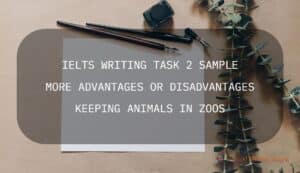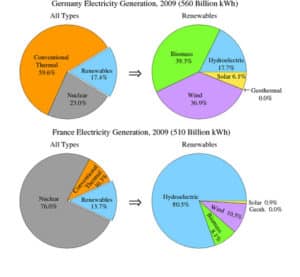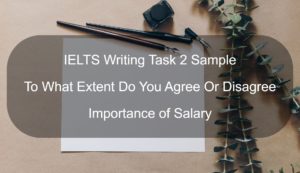Cohesion and coherence are often mentioned together because they are the two pillars of a well-written piece of writing. Without them, your work won’t make any sense to your readers. But what are they exactly? What is the difference between them? How do we achieve good cohesion and coherence? If you are trying to find the answers to these questions, you are at the right place.
What is cohesion?
Imagine a high-rise building. How is it made? Bricks, wood, and many other materials are put together to build it. In other words, all those materials become one large unit to make it happen. That’s what cohesion in writing is about. If your words and sentences stick together, they will form an essay or an article (our high-rise building). That said, not every word and sentence can be used with another word or a sentence. That’s why there are two main types of cohesion: Grammatical Cohesion and Lexical Cohesion.
Grammatical cohesion
As the name suggests, this type of cohesion deals with the grammatical relations between text elements. More precisely, it is about referencing, substitution, ellipsis, and conjunction.
Referencing
Referencing means to refer back to something or someone that you have mentioned earlier in your essay. This can be done in several ways:
By using pronouns like I, you, he, them, us, mine, this, those…:
- Alice loves hiking. She is also interested in rock climbing.
- A severe storm is expected to hit the town. This is the reason why people have turned to panic buying at grocery stores and pharmacies.
By using comparative references to talk about identity, similarities, or differences:
- Some animals like snakes and scorpions are venomous. Being too close to such animals is therefore unwise.
- Yesterday, someone on the street came up to me and asked for my autograph. He thought that I was Mark Wahlberg. Surprisingly, the same thing happened today.
Substitution
Simply put, substitution means to replace a word or phrase with another one to avoid repetition. The three most common words for this purpose are one, ones, and different forms of the verb do.
Examples:
- I asked him which car he liked, and he pointed at the blue one.
- We had a stupid competition to see who could drink a bottle of milk faster. Jack finished before I did.
Ellipsis
Ellipsis refers to the omission of a word or part of a sentence because the meaning is clear even without them. Since those parts are replaced with no other word(s), we can also call it substitution by zero.
Examples:
Sentence with poor cohesion: I’d like to visit New York, but I can’t afford to visit New York.
Sentence with good cohesion: I‘d like to visit New York, but I can’t afford to.
Sentence with poor cohesion: Teenagers play online games as often as they can play online games.
Sentence with good cohesion: Teenagers play online games as often as they can.
Conjunction
The last type of grammatical cohesion is conjunction. It shows the relationship between a sentence and the one following or preceding it. This is usually done by using conjunctives (e.g., firstly, moreover, in addition, for example, nevertheless, on the other hand, however, in conclusion…).
Examples:
- This is a simple process. However, there are dangers.
- It’s very expensive to live in New York. For example, I pay $1250 for a one-bedroom apartment.
Lexical Cohesion
Lexical cohesion refers to the meaningful relationship between the words in your sentences. There are two main forms of lexical cohesion: Repetition and Collocation.
Repetition
Repeating keywords, phrases, and ideas throughout your work helps your readers follow the main threads more easily. Take a look at the example below to understand how it works.
Example:
My roommate is an annoying person. I am annoyed each time I have to shut the ice-covered windows that John, my roommate, insists on opening every night even during the winter.
Question: My English teacher once said that if we repeat a word, our cohesion score will go down. Is he wrong?
Answer: Well, word or phrase repetition is like adding salt to food. You can do it with the right amount, but if you repeat a word a lot, yes, it will have a negative effect on the quality of your writing. Let me clarify this point using our example.
Example:
Poor cohesion because of the excessive use of the word “annoy”: In the early morning I am easily annoyed by my roommate. I am annoyed each time I have to shut the ice-covered windows that John, my roommate, insists on opening every night even during the winter. Another annoying habit of his is that he smokes cigarettes at home, which makes life unbearable to me. And last but not least, I am annoyed by the fact that he doesn’t care about his dandruff problem, and I have to cope with the white tornado swirling around the apartment.
Question: So what is the solution to this problem?
Answer: appropriate synonyms or more specific words!
Synonyms or near-synonyms are words that convey almost the same meaning. That said, you should always be careful because, in most cases, you can’t just replace a word with another. For example, many people believe that the words annoying and irritating are synonyms and can be used interchangeably, but the truth is that these two words cannot be used in that way 100% of the time. As for our example above, we can replace some of the repeated words with others that are close to the original ones but also more precise.
Better cohesion because of the use of synonyms or more precise vocabulary: In the early morning I am easily annoyed by my roommate. I am annoyed each time I have to shut the ice-covered windows that John, my roommate, insists on opening every night even during the winter. Another infuriating habit of his is that he smokes cigarettes at home, which makes life unbearable to me. And last but not least, I am disgusted by the fact that he doesn’t care about his dandruff problem, and I have to cope with the white tornado swirling around the apartment.
We could also take one more step and add more variety to our writing by using different parts of speech if we had to use a word more than once:
My roommate is a really annoying person. I am annoyed every morning that I have to shut the ice-covered windows that John, my roommate, insists…
Note: As you can see, I started the paragraph with the main idea (the roommate being annoying) and then provided vivid examples to support that while repeating the idea that the roommate is an annoying person. I used the same word, its synonym, and a word that conveys a close but more precise meaning. This is how you use repetition to your advantage.
Collocation
Collocation is how some words are often used together or a particular combination of words used in this way. For example, “take a shower” is a typical collocation in English. These word combinations make your work sound natural; therefore, it is best to learn new words with their collocations. For non-native learners, the best way to learn them is to use a good online dictionary.
Examples:
- Yesterday, I received an avalanche of emails.
- Unfortunately, domestic violence increased during the pandemic.
Other factors contributing to a good cohesion
Thematic development
By now, we know that cohesion is all about sticking together. Thematic development refers to how a sentence prepares the reader for the next. To understand how it works, take a look at the example below:
Example:
People should consider doing unpaid community service from time to time. Such voluntary work creates a feeling of happiness among them and boosts their self-esteem. Experiencing those feelings on a daily basis helps people have a higher sense of life satisfaction.
Notice how the second part of each sentence forms the theme/main subject of the next sentence. In other words, if you pay attention, you will see that the sentences are connected to each other like a chain.
Note: Although this kind of paragraph development results in very good cohesion, it is not always possible to develop your ideas this way. On such occasions, conjunctives are what you need to use.
Consistency in point of view
Point of view refers to the angle from which you want to present ideas. Do you want to tell the reader that those ideas are your opinions? Do you want to speak directly to your readers and give them some tips and advice? Or do you just want to present facts? In order to have good cohesion in your work, you need to choose the appropriate one and stick to it; otherwise, you’ll just cause confusion, and that is the worst thing that can happen to a piece of writing.
There are three main points of view that you can use in your writing:
First person: In this point of view, you use pronouns like I, my, me, we, our, and us to present your opinion. It is suitable if you are writing a personal letter or an opinion essay.
Example:
While I agree that healthcare and education must be the government’s first priority, I also believe that space exploration should be considered as the second.
Second person: In this point of view, you structure your work around the pronouns you and your. Use this point of view if you want to speak directly to your readers or give them some pieces of advice. As you can see, this paragraph is written in the second-person point of view.
Third person: This is the most formal point of view. You should use this in formal or academic writing. It uses the pronouns he, she, it, and they. Writers usually choose this one to present facts and not opinions.
Example:
When it comes to news editing, a variety of factors influence the process. First of all, the political affiliations of the editors or the owners of the media company play a major role in selecting the news items to be broadcast. They would like to promote their favorite political parties…
Consistency in tense
Use the past tense if you are referring to past events (e.g. I took a trip to Vancouver last summer, and I really enjoyed it), but if you are presenting facts and opinions, it is better to use the present tense. What’s more important is that you stick to one tense throughout your essay and avoid switching your tense unless it’s necessary.
Example:
Change can sometimes be a difficult thing to accept. No matter how big or small, sadly, many of us fear it.
Note: Sometimes, it is necessary to refer to past events. Take a look at the example below:
Change can sometimes be a difficult thing to accept. No matter how big or small, sadly, many of us fear it. Having said that, we should always remember that a change may sometimes bring about better opportunities in life. For example, when I was ten years old, my family moved to a new house. I was upset at first because I didn’t want to lose my friends, but my old friends and I figured out a way to hang out from time to time. Plus, we had such great neighbors that I made some new friends. Now I’m 15 and no more scared of changes.
Notice how the writer helped the reader understand which part is in the past and which is in the present by using time indicators.
What is coherence?
Coherence is achieved when it is easy for the reader to follow the ideas and sentences in your writing. In other words, if the reader can easily move from one sentence to the other or from one paragraph to the next, the work is then coherent. One quick way to assess the coherence of a piece of writing is to read it and see if you can understand everything in one try. If you had to read the paragraph twice or more, it’s probably because it is not coherent. The following are some methods that you can use to improve your work’s coherence:
Improve your cohesion
Earlier in this article, we discussed cohesion and the ways that can help you improve it. Without cohesion, you cannot achieve coherence. So read those tips carefully and implement them in your writing. You’ll soon see a significant improvement in the quality of your work. However, cohesion is not enough to achieve coherence. A piece of writing can have cohesion but lack coherence. This is why you also need to follow other rules to create an easy-to-read essay.
Use transitional words or phrases to link ideas, sentences, and paragraphs.
Readers must always know where they are in the paragraph. Use transitional or linking devices at critical locations, not in front of every sentence, to help the reader know how your points are connected and understand where you are moving from explanation to example or from pros to cons. Using conjunctives, which are already mentioned in this article, can help you with this.
Example:
Bad coherence: Australia is home to many unusual animals. The platypus is a mammal but lays eggs.
In this example, the reader may think that the second sentence is a new idea, but it is strange jumping so fast from one idea to the next. So he or she hesitates to think about what is going on. That hesitation is a sign of poor coherence.
Good coherence: Australia is home to many unusual animals. The platypus, for example, is a mammal but lays eggs.
Now the reader knows that the second sentence is an example for the first one. There’s no need to stop and think because the flow of ideas is smooth.
Use parallel structures
Simply put, if you are writing about a list of things, all the items should take the same grammatical form.
Examples:
Not parallel: I like to watch TV, playing soccer, and to eat pizza.
Parallel: I like to watch TV, play soccer, and eat pizza.
Parallel: I like watching TV, playing soccer, and eating pizza.
Not parallel: A new athletic program is both worthwhile and a necessity.
Not parallel because worthwhile is an adjective, but necessity is a noun.
Parallel: A new athletic program is both worthwhile and necessary.
Now both of them are adjectives (the same grammatical form).
Not parallel: You can see birds on the ground, in the trees, and flying.
Not parallel because on the ground and in the trees are prepositional phrases, but flying is an adjective.
Parallel: You can see birds on the ground, in the trees, and in the air.
Now all of them are prepositional phrases.
Final Note: If you want to improve your writing skills, you should practice writing regularly. Also, make a habit of reading high-quality materials like magazines, novels, or online articles from reputable sources. If you do these, you will be on the right track and see improvement in your writing skills.
Follow us on YouTube for more tips and resources.








